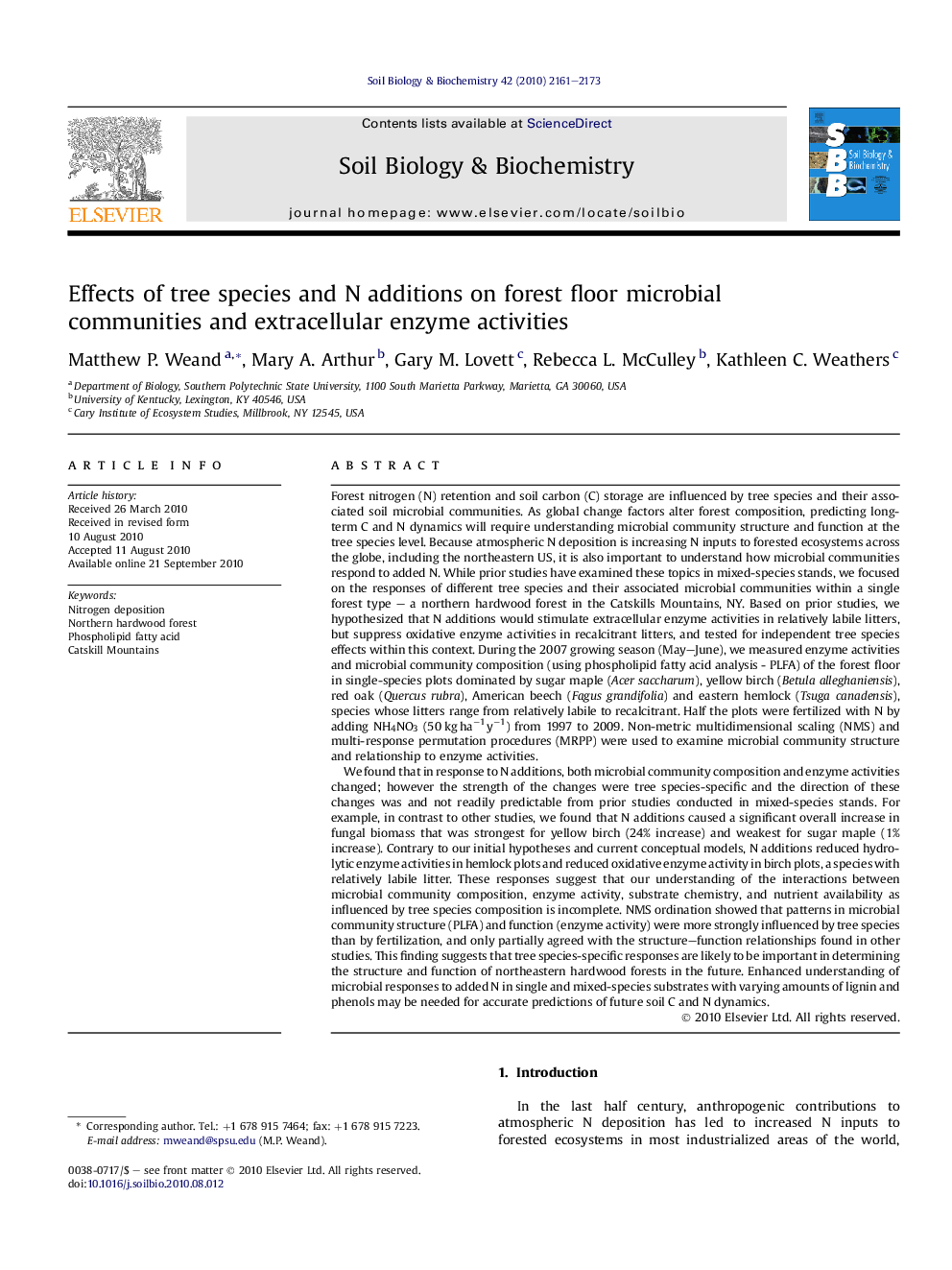| Article ID | Journal | Published Year | Pages | File Type |
|---|---|---|---|---|
| 2025370 | Soil Biology and Biochemistry | 2010 | 13 Pages |
Abstract
We found that in response to N additions, both microbial community composition and enzyme activities changed; however the strength of the changes were tree species-specific and the direction of these changes was and not readily predictable from prior studies conducted in mixed-species stands. For example, in contrast to other studies, we found that N additions caused a significant overall increase in fungal biomass that was strongest for yellow birch (24% increase) and weakest for sugar maple (1% increase). Contrary to our initial hypotheses and current conceptual models, N additions reduced hydrolytic enzyme activities in hemlock plots and reduced oxidative enzyme activity in birch plots, a species with relatively labile litter. These responses suggest that our understanding of the interactions between microbial community composition, enzyme activity, substrate chemistry, and nutrient availability as influenced by tree species composition is incomplete. NMS ordination showed that patterns in microbial community structure (PLFA) and function (enzyme activity) were more strongly influenced by tree species than by fertilization, and only partially agreed with the structure-function relationships found in other studies. This finding suggests that tree species-specific responses are likely to be important in determining the structure and function of northeastern hardwood forests in the future. Enhanced understanding of microbial responses to added N in single and mixed-species substrates with varying amounts of lignin and phenols may be needed for accurate predictions of future soil C and N dynamics.
Related Topics
Life Sciences
Agricultural and Biological Sciences
Soil Science
Authors
Matthew P. Weand, Mary A. Arthur, Gary M. Lovett, Rebecca L. McCulley, Kathleen C. Weathers,
